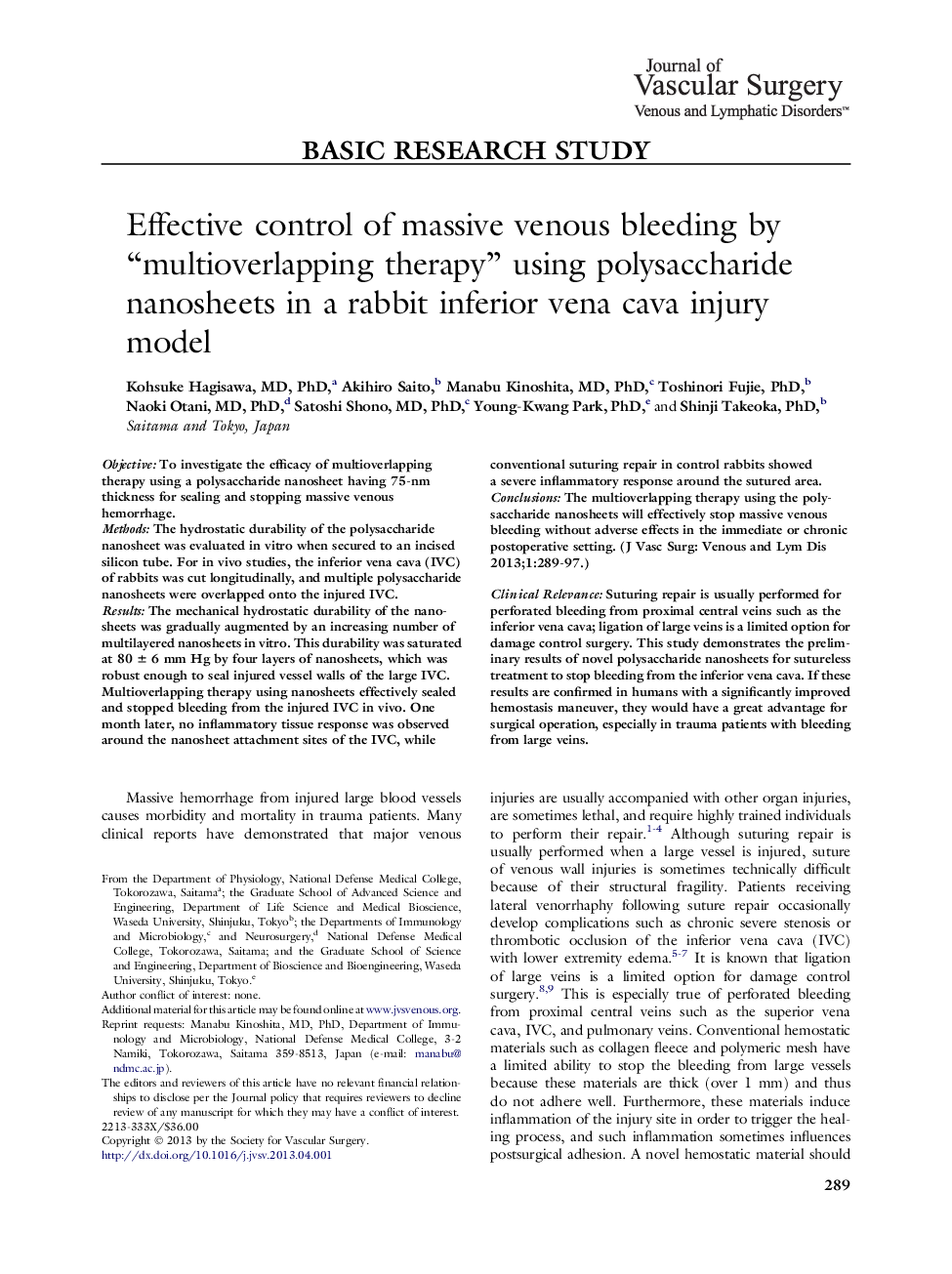| کد مقاله | کد نشریه | سال انتشار | مقاله انگلیسی | نسخه تمام متن |
|---|---|---|---|---|
| 2998158 | 1180226 | 2013 | 9 صفحه PDF | دانلود رایگان |

ObjectiveTo investigate the efficacy of multioverlapping therapy using a polysaccharide nanosheet having 75-nm thickness for sealing and stopping massive venous hemorrhage.MethodsThe hydrostatic durability of the polysaccharide nanosheet was evaluated in vitro when secured to an incised silicon tube. For in vivo studies, the inferior vena cava (IVC) of rabbits was cut longitudinally, and multiple polysaccharide nanosheets were overlapped onto the injured IVC.ResultsThe mechanical hydrostatic durability of the nanosheets was gradually augmented by an increasing number of multilayered nanosheets in vitro. This durability was saturated at 80 ± 6 mm Hg by four layers of nanosheets, which was robust enough to seal injured vessel walls of the large IVC. Multioverlapping therapy using nanosheets effectively sealed and stopped bleeding from the injured IVC in vivo. One month later, no inflammatory tissue response was observed around the nanosheet attachment sites of the IVC, while conventional suturing repair in control rabbits showed a severe inflammatory response around the sutured area.ConclusionsThe multioverlapping therapy using the polysaccharide nanosheets will effectively stop massive venous bleeding without adverse effects in the immediate or chronic postoperative setting.
Clinical RelevanceSuturing repair is usually performed for perforated bleeding from proximal central veins such as the inferior vena cava; ligation of large veins is a limited option for damage control surgery. This study demonstrates the preliminary results of novel polysaccharide nanosheets for sutureless treatment to stop bleeding from the inferior vena cava. If these results are confirmed in humans with a significantly improved hemostasis maneuver, they would have a great advantage for surgical operation, especially in trauma patients with bleeding from large veins.
Journal: Journal of Vascular Surgery: Venous and Lymphatic Disorders - Volume 1, Issue 3, July 2013, Pages 289–297